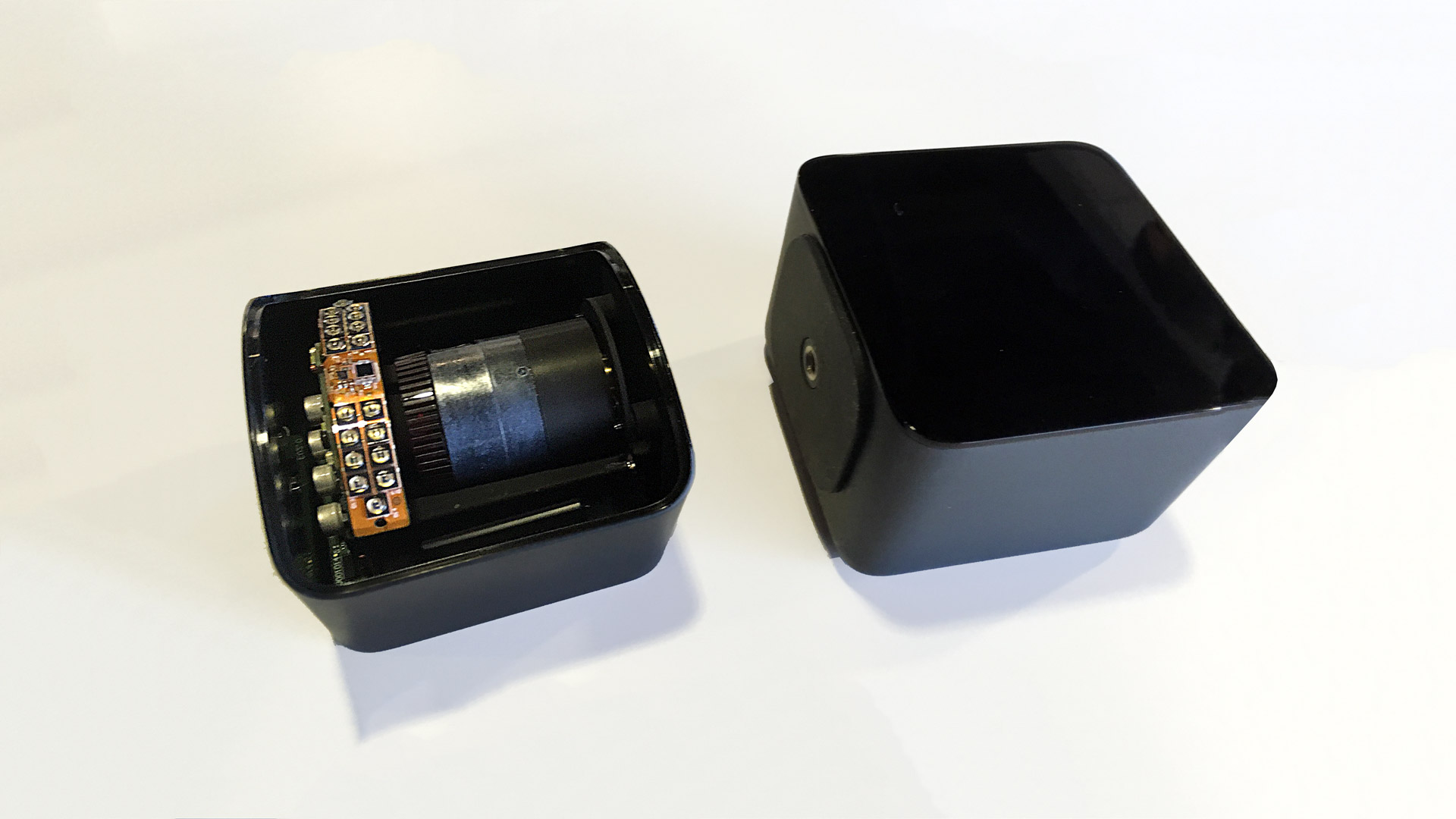SteamVR is busily working on its next generation of tracking. The most significant advancement is in the Lighthouse, the core component of VR tracking. SteamVR Tracking is accomplished with two of these lighthouses flooding the immediate sourounding area with vertical and horizontal tracking beams which interact with micro sensors. The old liighthouse base station required two rotors, one for the horizontal sweep, one for the vertical. The next generation of base stations aims to reduce the requirements to just one rotor which will generate both sweeps
Month: February 2017
-

Immersive Entertainment Market Building Attention
I posted an article yesterday, Immersive Market Heating Up, about the on-coming impact immersive experiences will make in the world of entertainment. Almost as providence, Forbes posted a similar article, Imax Opens New Virtual Reality Site, not about The Void but about Imax’s contribution to this new industry. In a nutshell it would seem the folks at Forbes would agree with my rants.
Early this year in Los Angeles, with little fanfare but huge implications for the future of entertainment, virtual reality took its first big leap toward finally becoming a permanent part of mainstream gaming, cinema, and media in general as IMAX opened their first public VR Centre.
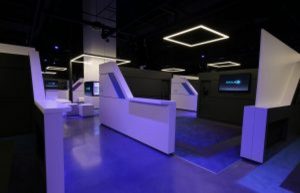
Not Unlike other VR Arcades that are starting to open around the world, Imax gives the users plenty of options to select their desired experiences and then leads them to staging areas where they are immersed in the gaming/ride experience. While I have not had the opportunity to experience the facility first hand, it definitely seems Imax spared nothing when creating futuristic, space-age like entertainment chambers. One thing I really like about this layout is that it encourages third person participation or rather “observation”. Folks can observe the action either behind barrier half walls or through observation monitors.
All of the experiences available to the facility were produced by third-party production studios. Includes tiles are Star Wars: Trials On Tatooine, John Wick Chronicles, Eagle Flight, Raw Data, The Walk, Rabbids VR Ride, Knockout League, Archangle and Star Trek: Bridge Crew.

The article’s author, Mark Hughes, observes how this will easily catch on to the mass market and be used not only for games but for live sporting events, concerts and other events participants are not able or will to participate in directly. Another interesting application I had not thought about is these VR experiences could compliment cinematic movies. By releasing at the same time as the film, the experience could empower the participant to become part of the action in the film and either re-act the moments of key excite or even re-create their own outcomes.
Rob Lister, Chief Development Officer at IMAX foresees not installing these experiences inside IMAX theaters but in-conjunction with them. They realize there is plenty of available and unused retail space available for the taking. People want external, social experiences. IMAX intends to create a very stylized brand that consumers will learn to recognize.
IMAX has big plans for expanding their VR facilities around the world. They have raised a $50M fund with industry partners to build 25-30 facilities over the next 3 years. The emphasis will be on AAA content, including prominent Hollywood studio content. However, they are not going to focus solely on film content. They anticipate that gaming will be huge in this space and that is another major category they will be pursuing with companies such as Skydance and Ubisoft.
It would definitely appear the race for Immersive Experiences is heating up. Will the front runners grow to be market giants or will they be pioneers who get shot from the back? From now it’s too hard to guess. For now all I can advise is get your VR headset, go off to your favorite VR Arcade center and have a good time.
-
Full Body Tracking
Lat month, in December, iMyth Demonstrated full body tracking for its interactor using the Perception Neuron tracking outfit. It was an impressive bit of engineering to get the system up and working and coordinated with the Vive and UE4. For the prototype example this tech strategy worked well. The participant understood the interactor and there was never any “strong” concerns about the problems with the tech.
Regretfully there were many Problems.
- The Perception Neuron was “sensitive”. Sometime it wanted to come out and play. Some days we could not get it to talk no matter what we did.
- IMU Drift. Because the Neuron suit was only implemented with IMU trackers the suit never really understood its world space location and the interactor kept drifting off.
- Spazzing out. Occasionally, the character was just sort of go into a seizure, freeze up or go a little crazy. For the prototype this was fine but we need a more consistent solution.
- Finger Tracking. Did the Perception neuron actually track the interactor’s fingers during the actual experience? Regretfully we never tested. I have a concern they did not work.
- The Perception Neuron Suit was actually owned by one of our Technical Producers, Andrew. We are very grateful Andrew allowed iMyth to use the suit. Regretfully the suite left when Andrew graduated.
In Mid-December, I also attended journeyed to Seattle to get Vive Lighthouse training. The Lighthouse id the tracking technology Valve uses to track all of the objects in the environment. With this technology we could track an almost infinite number of objects and build our own Vive Controllers. I immediately started thinking about how we could use this technology to easily track the interactor and participant.
It seems like a couple of other companies were thinking about the same thing. Steve Bowler at Cloadgate experimented with strapping Vive Controllers to his feet. He was able to get some pretty good results.
Steve’s solution was a great first start. However it was a bit problematic since he required an entirely new Vive setup to get the controllers. He did not have any waist tracking, (Important for tracking overall body movement). Also, controllers strapped to your feet are a bit awkward.
Now it seems like the folks at IKinema have taken things one step further and and created their own Vive tracker controllers which are mounted on the feet and waist.
This demonstration looks really sharp and claim to have no post-processing. I believe them. However the imYth solution is still not quite there. Project Orion may still take some time to become commercially available. Their solution required two controllers, one in each hand. For iMyth I am seeking a hands free solution so we would require a tracking device on the wrists and eventually some IMU finger tracking. Ikinema is also a Motion tracking company so I I would not be surprised if we wanted their technology, we would also probably need to purchase a suite of re-targeting tools which would be overkill for what we want. I don’t know. I’d like to get in contact with the Ikinema guys and investigate their plans for release.
So this leads ups back to iMyth creating their own tracking solution. I just received an email from Reid at Triad Semiconductor saying they just received the go ahead to produce the boards needed to create custom controllers. Those will be available in 8 weeks. This will be exciting since iMyth will not only be tracking the interactor and participant but multiple other participants and multiple set pieces and props as well. Very exciting times!
-
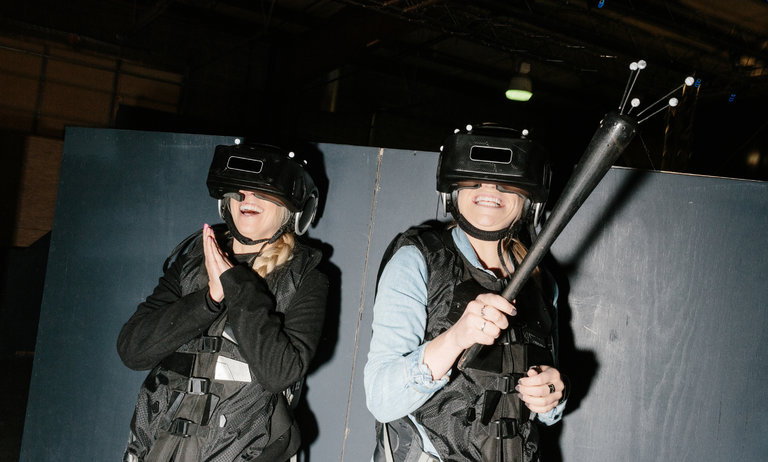
Immersive Experience Market Heating Up
I just read an article from the New York times, “With New Invention, VR’s Potential for Magic Gets Real“. It is an interesting article that gives a little background information about The Void, in Lindon Utah , and it gives a quick introduction of what else is going on in this new industry.
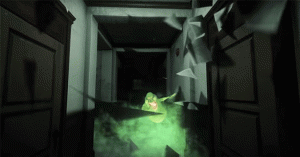
The article goes on to expose some financial data that I have not seen elsewhere. The article claims The Void’s Ghostbuster Experience at Madame Tussauds New York has sold more than 43,000 tickets since July, which translates to nearly $900,000 in revenue. Up until this point, The Void has been funded by Ken Bretschneider who has already invested millions of his own into the endeavor; (Rumored $12-$15 Million). The Void is now working with the Raine Group, a merchant bank known for its investment in Vice and ties to the William Morris Endeavor talent agency, to raise expansion funding. There are also rumors about mall owners and theme park operators.
The Void also sees itself as a new draw for dying malls, where anchor stores have been closing. Multiplexes, many of which are overbuilt, could convert auditoriums into stages. Film companies, eager for new ways to market movies and keep franchises alive between chapters, could turn to the Void as well.
The competition in this arena is building as well. Last week, Imax said it planned to open six V.R. centers this year, some in partnership with AMC Theaters and Regal Entertainment, at a cost of up to $400,000 each, not including real estate. Last December, her in good old Orlando, Zero Latency opened its first installation. I have yet to encounter numbers associated with this arrangement.
The competition in this new arena is building. Last week, Imax said it planned to open six V.R. centers this year, some in partnership with AMC Theaters and Regal Entertainment, at a cost of up to $400,000 each, not including real estate. “Virtual reality is a complex ecosystem that’s in need of a jump-start, and we’re here to provide the spark,” said Rich Gelfond, Imax’s chief executive. Also announced last week was Dreamscape Immersive, which hopes to open its first center dedicated to virtual reality experiences in the fall. It has cobbled together $11 million in funding from companies like 21st Century Fox, Westfield Corporation and Warner Bros. Mr. Spielberg is also involved.
The Void is fairly confident it will be able to stay a leader in this medium due to its three year lead exploring this new technology. I think they may have a point. This is a brand new medium in the realm of trans-media storytelling. All the rules are different and must be explored. The Void has a talented team of form VFX people and stage magicians. Luckily, iMyth is also endowed with talented individuals with considerable experience. With its first prototype, “The Courier”, iMyth now has a foundation with which it can start learning and mastering the nuances of this new field.
-
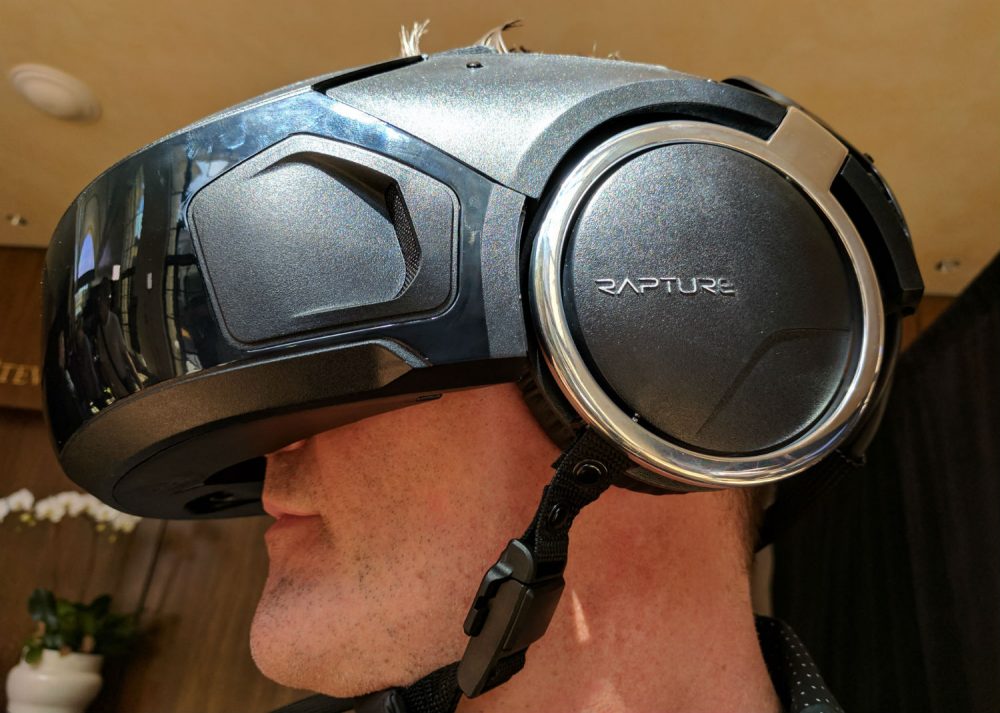
The Void Enters 2017 With Promises!
An interesting article was just posted on Upload VR called, The Void Upgrades Display, Aims For 20 Installations This Year.
This is an interesting article and it seems to raise some very valid concerns. The article claims that the Void is the first commercial installation to employ free-roaming in an immersive experience. This however is not true. Zero Latency already has opened their first facility in Orlando. Similarly, Halloween Horror Nights in Orlando offered an immersive experience which utilized Mobile VR. The Void’s Madame Tussauds Ghost Busters Experience was a fantastic step in the right direction. However The Void needs to keep things moving.
The article states The Void employs over 100 people. That is a lot of people working for a company that doesn’t really have a product yet. Jim Jensen is a charismatic speaker. I had an opportunity to hear him speak at the Orlando IX back in October. He presents a tremendously bright vision for the future. However, I could not help but think some of his prediction and claims to be slightly outlandish. I’m sure most people unfamiliar with VR technology accepts what he claims without question.
In addition to an improved headset along with 20 installations for 2017, the Void has a lot of promises to uphold. The claims that Jim Jensen are making are motivating and exciting for sure. However the cynic in me keeps saying, “I’ll believe it when I see it.” For the entire industry of Immersive Experiences, I hope his claims are true. If they are not, then The Void’s shenanigans will only go down at as black eye for all immersive VR.
-
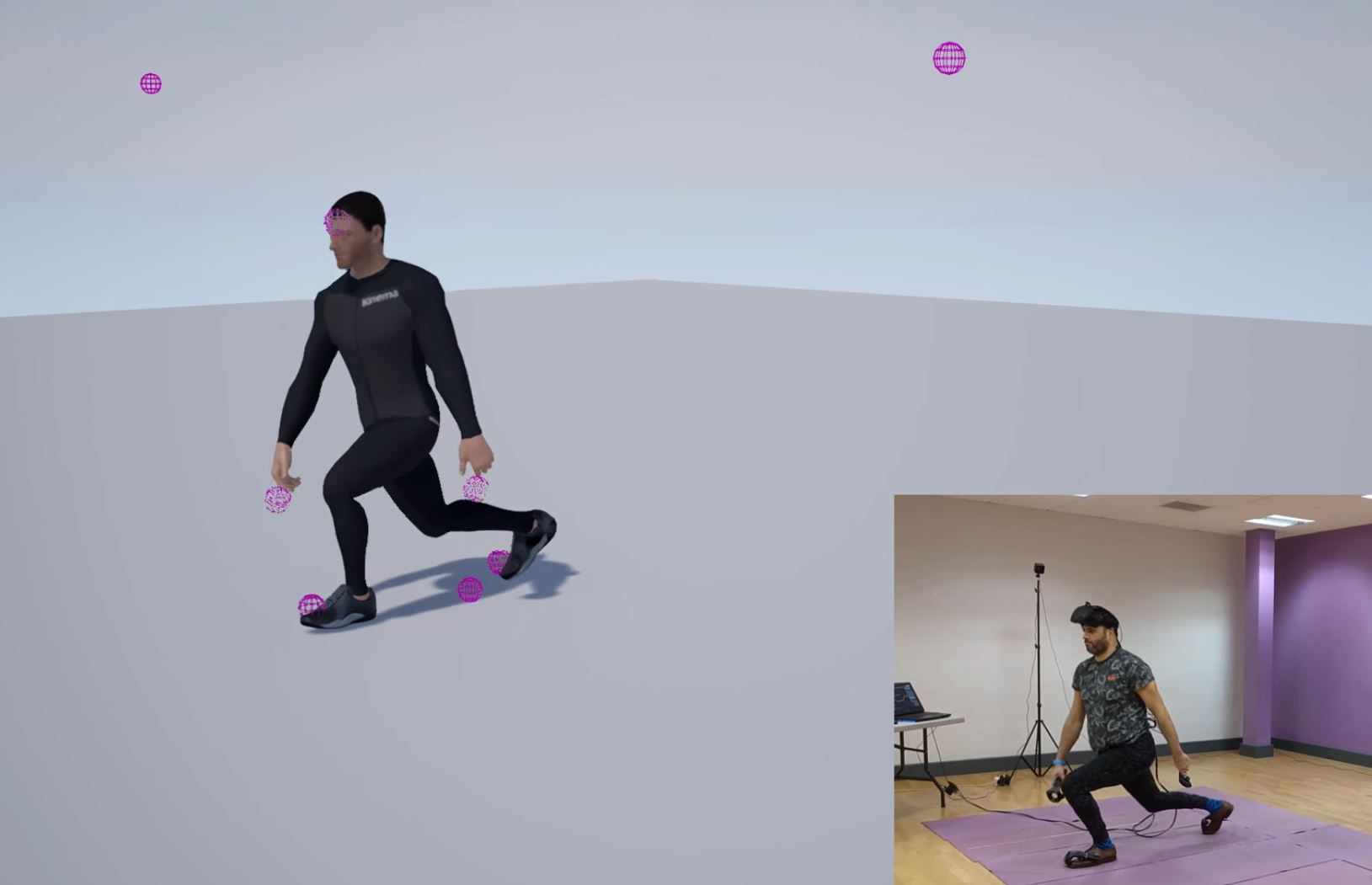
Full Body Tracking
Lat month, in December, iMyth Demonstrated full body tracking for its interactor using the Perception Neuron tracking outfit. It was an impressive bit of engineering to get the system up and working and coordinated with the Vive and UE4. For the prototype example this tech strategy worked well. The participant understood the interactor and there was never any “strong” concerns about the problems with the tech.
Regretfully there were many Problems.
- The Perception Neuron was “sensitive”. Sometime it wanted to come out and play. Some days we could not get it to talk no matter what we did.
- IMU Drift. Because the Neuron suit was only implemented with IMU trackers the suit never really understood its world space location and the interactor kept drifting off.
- Spazzing out. Occasionally, the character was just sort of go into a seizure, freeze up or go a little crazy. For the prototype this was fine but we need a more consistent solution.
- Finger Tracking. Did the Perception neuron actually track the interactor’s fingers during the actual experience? Regretfully we never tested. I have a concern they did not work.
- The Perception Neuron Suit was actually owned by one of our Technical Producers, Andrew. We are very grateful Andrew allowed iMyth to use the suit. Regretfully the suite left when Andrew graduated.
In Mid-December, I also attended journeyed to Seattle to get Vive Lighthouse training. The Lighthouse id the tracking technology Valve uses to track all of the objects in the environment. With this technology we could track an almost infinite number of objects and build our own Vive Controllers. I immediately started thinking about how we could use this technology to easily track the interactor and participant.
It seems like a couple of other companies were thinking about the same thing. Steve Bowler at Cloadgate experimented with strapping Vive Controllers to his feet. He was able to get some pretty good results.
Steve’s solution was a great first start. However it was a bit problematic since he required an entirely new Vive setup to get the controllers. He did not have any waist tracking, (Important for tracking overall body movement). Also, controllers strapped to your feet are a bit awkward.
Now it seems like the folks at IKinema have taken things one step further and and created their own Vive tracker controllers which are mounted on the feet and waist.
This demonstration looks really sharp and claim to have no post-processing. I believe them. However the imYth solution is still not quite there. Project Orion may still take some time to become commercially available. Their solution required two controllers, one in each hand. For iMyth I am seeking a hands free solution so we would require a tracking device on the wrists and eventually some IMU finger tracking. Ikinema is also a Motion tracking company so I I would not be surprised if we wanted their technology, we would also probably need to purchase a suite of re-targeting tools which would be overkill for what we want. I don’t know. I’d like to get in contact with the Ikinema guys and investigate their plans for release.
So this leads ups back to iMyth creating their own tracking solution. I just received an email from Reid at Triad Semiconductor saying they just received the go ahead to produce the boards needed to create custom controllers. Those will be available in 8 weeks. This will be exciting since iMyth will not only be tracking the interactor and participant but multiple other participants and multiple set pieces and props as well. Very exciting times!
-

Zero Latency Review
This is the official iMyth review of the Zero Latency installation in Orlando Florida.
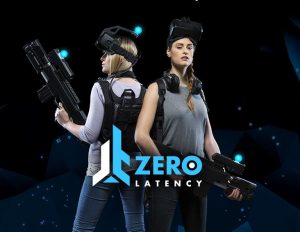
Zero Latency, from Melbourne Australia, is one of the pioneering companies producing a new media format which I like to call, “Immersive Experiences”. Companies such as Zero Latency, The Void, VRCade and Universal’s Halloween Horror Nights are the first companies to create immersive experience attractions where folks must leave their homes and quite often pay extra money in order to “experience” the attraction. These attractions boast the interactivity of video games, the narrative of film and the immersiveness of theme park attractions. Last year, Zero Latency created franchises in Melbourne, Tokyo, Madrid(?) and Orlando, Florida. The collaboration with “Big Event” in Orlando is the first US Zero Latency Installation. Let’s all hope they continue gaining momentum!
Zero latency deserves many accolades for creating a profitable business model from a technology that has only become publicly accessible in the last few years. Great job guys! I could not wait to give the experience a try. I brought my family, (wife and two teenagers) to share the experience. The facility inside Big Event was polished and clean. The experience went off without a hitch. Participating in the experience with multiple party members was a huge win. Zero Latency can support up to six participants at one time. The operators were friendly and polite and made the attraction enjoyable.
The gist of the experience is simple. You and your party are a future commandos stranded in a futuristic junk yard under the attack of zombies. Kill as many zombies as possible before they kill you. Participants are equipped with a variety of guns, each with its own strengths and weaknesses. Participants communicate via microphone headsets mounted in the HMD.
Each participant is donned with a backpack computer, a plastic gun and a head mounted display with audio headset. I originally thought the backpacks would impact the experience negatively. However, after a brief adjustment period, the backpack was not even noticed. The HMD was comfortable enough and the gun was not too heavy. The illusion of immersiveness was not negatively impacted by carrying the extra weight.
Regretfully, as far as the visual quality of the experience is concerned, Zero Latency has a long way to go before they deliver the promises of their name. The latency was poor and felt slow. There was poor one to one correspondence with head motion and what was displayed on the HMD. There were times the frame rate lagged so badly I thought the experience had stopped. Two of our party members became disoriented and dizzy. They left the experience nauseous. The VR representations of the guns were not good. The guns felt unresponsive. They were hard to load and operate since their response times were so long. Avatar hands operated the weapons. However, they were not tracked to my actual hands. This lack of correspondence contributed to the uncomfortable disorientation.
The play of the experience is a standard zombie shooter. The participants run around the scene shooting zombies while trying to avoid being overwhelmed by the monsters. The experience lasts for fifteen minutes. Aside from the mentioned visual problems, there were other immersive detractors. While the participants could hold onto their guns, there were no other physical objects to interact with. Once understood there were no physical boundaries, it was just too easy to walk through walls, other participants and the evil zombies. If I was crowded by a horde of bad guys, all I had to do was walk away. The story behind the experience was minimal. My wife complained she was bored. Fifteen minutes of only shooting zombies was probably too long for her. I myself noticed too many repeated characters, animations and set pieces. Participants can talk to each other through the earphone headsets. Regretfully there was no spatial association with the voices and the other participants. This made direct collaboration with other participants nearly impossible. This lack of collaboration combined with the insubstantiality of the environment made this a lonely experience.
Regretfully the overall experience felt like a very fancy but poorly executed video game. The visual quality had the stereotypical neon/dark rendering quality of the Unity game engine. Guns occasionally floated in the air without bodies attached to them. Not only could I travel through walls and other objects but the evil Zombies could as well. I wanted this experience to be more than just a video game but it seems that was the exact impact the creators were striving for.
After the experience, I had an opportunity to share the experience with my family. They thought the attraction was an interesting diversion. Regretfully, none wished for a repeat experience. Similarly, none of the teenagers said they would suggest the experience to their friends. I was very impressed by the professional level Zero Latency was able to present their experience. However, I did not feel the quality of the VR experience was as good. The tracking, latency and overall performance issues still need to be improved. I hope Zero Latency continuously strives to improve these as well as continue developing more robust, and enriching content. I really appreciate the amount of hard work required to bring this immersive experience to reality. I hope Zero Latency refines and polishes their technology and develops more robust and enriching experiences. I feel if they don’t continually strive to improve the quality of their experience, they will be seen as an early, but rather mediocre presentation of what this dynamic media has to offer.
